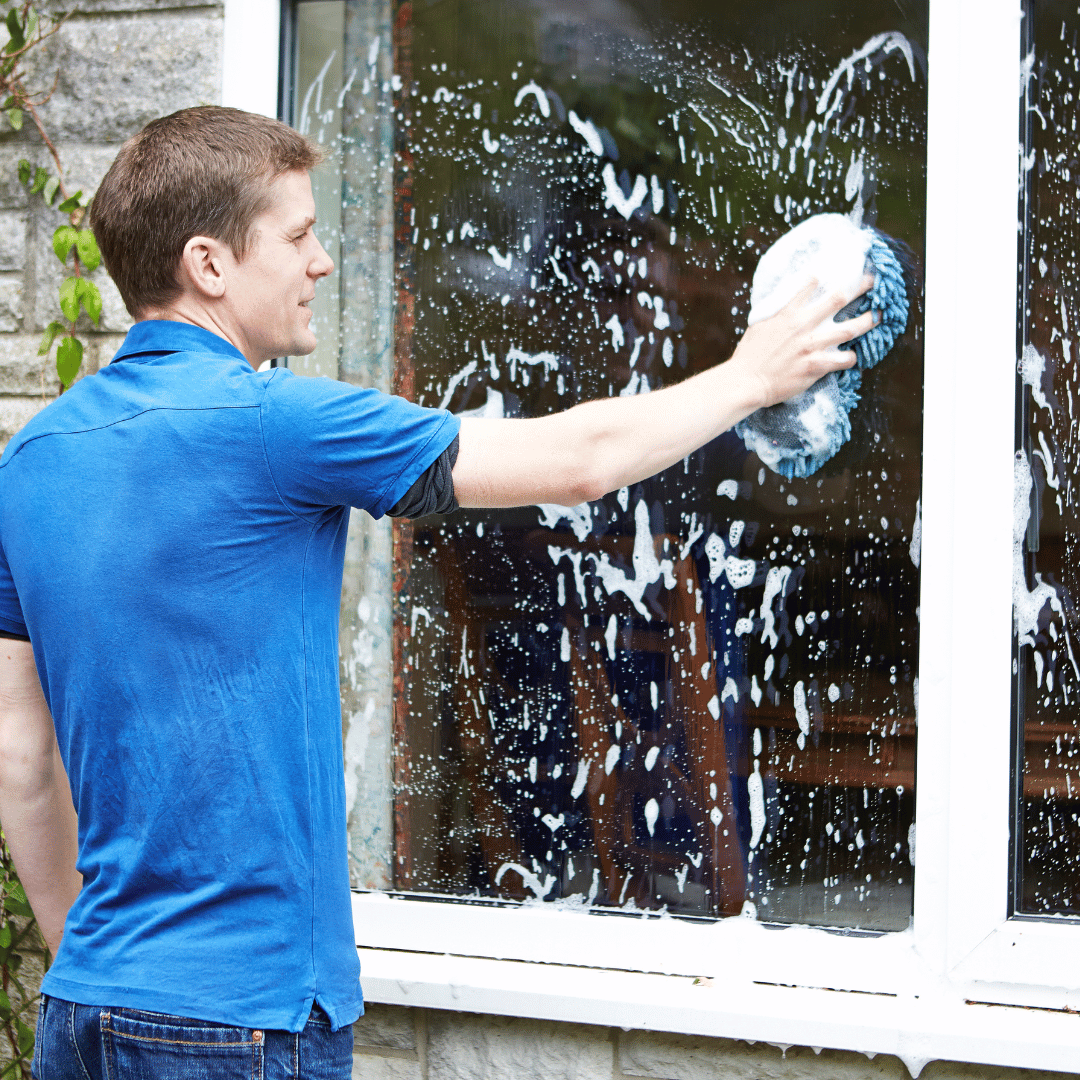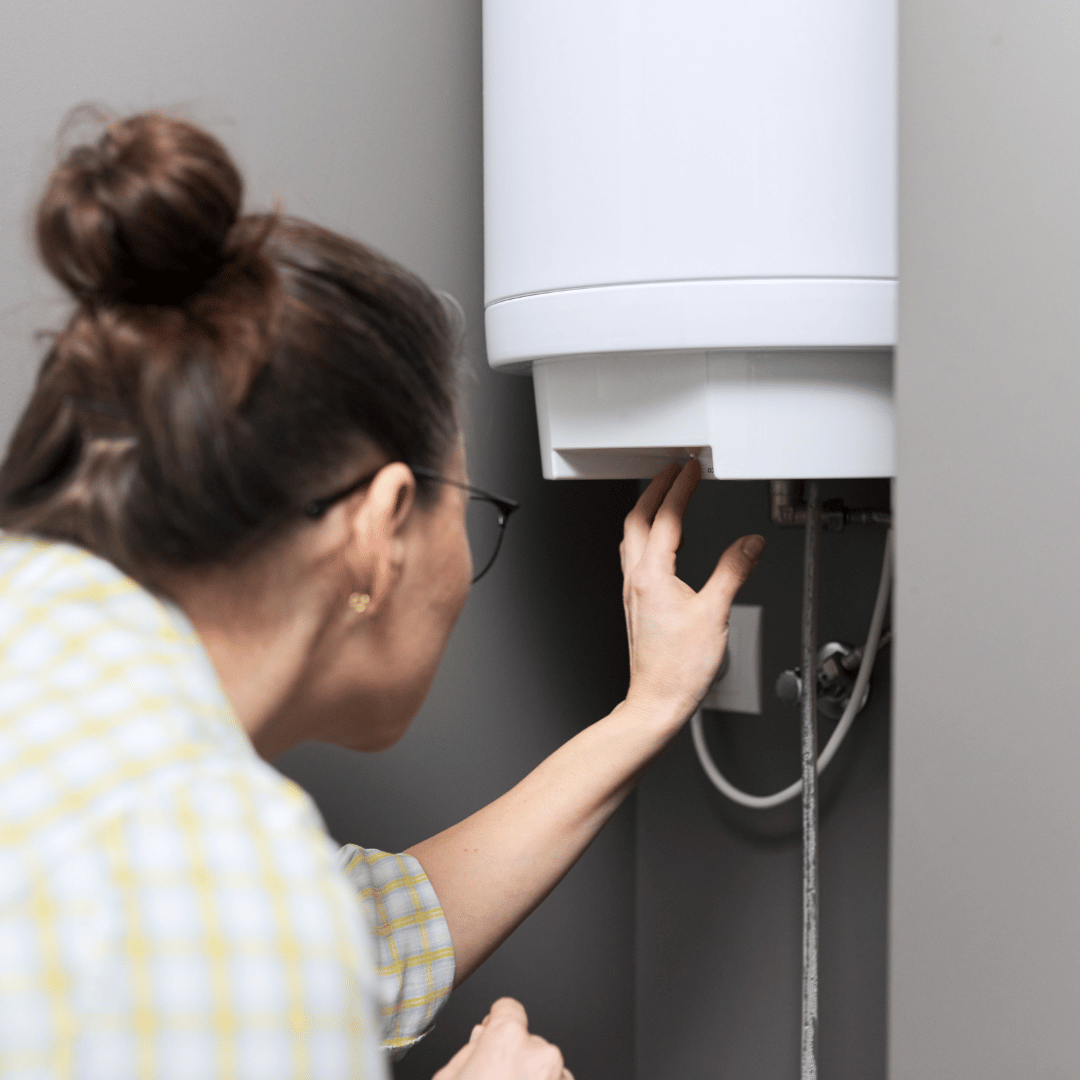
Understanding Sediment in Your Water Heater: How to Handle It and Prevent Damage
A water heater is a vital part of your home, providing hot water for everything from showers to dishwashing. However, over time, sediment can build up inside the tank, especially in areas with hard water. This sediment, primarily composed of minerals like calcium and magnesium, can affect the performance of your water heater, leading to inefficiency and potential damage. Regular maintenance is key to preventing these issues and ensuring your water heater operates at its best.
Incorporating routine checks and maintenance, such as flushing the sediment from your water heater, is a crucial aspect of preventative home maintenance. By taking these proactive steps, you can avoid costly repairs and extend the lifespan of your water heater. In this article, we will explore how sediment forms, why it’s harmful, and how you can address it to maintain the efficiency of your home’s water heating system. Proper interior home maintenance will help keep your water heater—and other appliances—functioning smoothly for years to come.
What Is Sediment in a Water Heater?
Sediment in a water heater is typically composed of minerals like calcium, magnesium, and other particles found in hard water. These minerals naturally accumulate over time as water heats up in the tank. When water is heated, these minerals do not dissolve and instead settle at the bottom of the tank, creating a layer of sediment.
This sediment buildup can vary depending on the hardness of your water and how often your water heater is used. In areas with especially hard water, sediment tends to build up faster. Over time, this accumulation can lead to a variety of issues, such as reduced water heater efficiency and potential damage to the system.
Sediment buildup affects the heat transfer process in the tank. The layer of sediment acts as an insulator, preventing the heating elements or burner from efficiently warming the water. As a result, the water heater has to work harder and longer to heat the water, which can lead to increased energy costs. Additionally, sediment can clog the drain valve and restrict water flow, causing pressure issues and even corrosion in extreme cases.
Addressing sediment buildup is an important part of preventative home maintenance. Regularly maintaining your water heater helps ensure it operates at peak efficiency, saving you money on energy bills and preventing costly repairs down the line. Whether you’re performing interior home maintenance tasks like flushing the water heater or handling exterior home maintenance tasks such as gutter cleaning or pressure washing, staying on top of maintenance is essential for a healthy home.
Is Sediment in a Water Heater Harmful?
Yes, sediment in a water heater can be harmful, both to the efficiency of the system and to its overall lifespan. Here’s how:
- Reduced Heating Efficiency
As sediment accumulates at the bottom of the tank, it forms a barrier between the water and the heating element or burner. This barrier makes it harder for the heat to transfer efficiently, forcing the water heater to work harder to heat the water. As a result, it takes longer for the water to reach the desired temperature, increasing energy consumption and raising utility bills. - Increased Wear and Tear
When a water heater has to work harder to heat the water, it puts additional strain on the system, leading to faster wear and tear. The heating elements or burner can wear out more quickly, and the overall mechanical parts of the water heater may need to be replaced sooner. - Corrosion and Damage to the Tank
Over time, the accumulation of sediment can cause damage to the water heater itself. The sediment can trap heat at the bottom of the tank, causing the metal to overheat and corrode. This can lead to leaks and the eventual failure of the tank. In extreme cases, sediment buildup can cause the tank to rupture, resulting in costly water damage and the need for a full replacement. - Clogged Drain Valve
Sediment can also clog the drain valve, which is used to remove water from the tank for maintenance. A clogged valve makes it difficult to flush the sediment out, potentially leading to further buildup. This can compound the problem, making the water heater even less efficient and harder to maintain.
Regularly flushing sediment from your water heater is an important step in preventative home maintenance. Just as you stay on top of exterior home maintenance tasks like gutter cleaning, pressure washing, or window washing, maintaining your water heater through routine care is essential for keeping it in good working condition.
What Is the Brown Stuff Coming Out of My Water Heater?
If you notice brown or rusty water coming from your faucets, especially right after turning on the hot water, it’s likely due to sediment buildup in your water heater. This brownish discoloration can be caused by a few different factors:
- Sediment Buildup
The brown stuff is often a combination of minerals like iron, calcium, and magnesium, which are commonly found in hard water. As sediment settles at the bottom of the tank, it can mix with the water and cause discoloration. When you first turn on the hot water, this sediment can get disturbed and flow into your pipes, leading to the brownish appearance. - Corrosion in the Tank
Over time, sediment buildup can lead to corrosion inside the water heater tank, especially if the system hasn’t been properly maintained. When the metal tank begins to rust, it can release small particles of rust into the water, which may appear brown or reddish. This is a sign that the water heater is deteriorating and may need attention. - Aging or Failing Anode Rod
The anode rod is a critical part of a water heater’s system, designed to prevent rust and corrosion by attracting corrosive elements in the water. However, as the anode rod ages and wears out, it becomes less effective at preventing corrosion. This can cause rust to form inside the tank, which can then mix with the water and cause discoloration. If you notice brown water, it may indicate that your anode rod is no longer doing its job.
Brown water coming from your water heater is a clear sign that something isn’t right. It’s important to address sediment buildup and corrosion issues as part of your preventative home maintenance routine. Just as you would maintain your interior home maintenance systems, like dryer vent cleaning and regular water heater servicing, checking on your water heater periodically can help you avoid costly repairs and keep your water clean and safe.
How Do You Get Sediment Out of a Water Heater?
Removing sediment from a water heater is a relatively simple process that can be done as part of your regular preventative home maintenance. Flushing the sediment from your water heater helps maintain its efficiency and extends its lifespan. Here’s how you can do it:
Step-by-Step Instructions for Flushing a Water Heater
- Turn Off the Power
- For electric water heaters, turn off the power at the circuit breaker.
- For gas water heaters, turn the thermostat to the “pilot” setting to avoid turning on the gas.
- Turn Off the Water Supply
- Shut off the cold water supply valve that feeds the water heater. This prevents any additional water from entering the tank while you’re working on it.
- Attach a Hose to the Drain Valve
- Connect a garden hose to the drain valve located at the bottom of the water heater. The other end of the hose should be placed in a floor drain or outside where the water can safely flow.
- Open the Drain Valve
- Open the drain valve and allow the water to flow out. Initially, the water may come out murky or brown, as it contains sediment and mineral deposits. Continue draining the tank until the water runs clear.
- Flush the Tank with Cold Water
- To remove remaining sediment, briefly turn on the cold water supply valve. Let the water flow into the tank and out through the drain valve. This will stir up any leftover sediment and help flush it out of the tank.
- Close the Drain Valve and Refill the Tank
- Once the water runs clear, close the drain valve, remove the hose, and turn the cold water supply back on to refill the tank. You’ll hear the tank filling up, and you should wait until the water heater is fully refilled before proceeding.
- Turn the Power Back On
- For electric heaters, turn the power back on at the circuit breaker. For gas heaters, set the thermostat back to your desired temperature.
When to Call a Professional
If you’re uncomfortable performing this maintenance yourself or if flushing the tank doesn’t resolve the sediment issue, it may be time to call a professional. A qualified technician can inspect the system, address more severe sediment buildup, and check for any potential damage to the tank. Regular professional maintenance ensures your water heater remains in good condition, which is essential for interior home maintenance.
By following these steps, you’ll be able to keep your water heater running efficiently and avoid costly repairs in the future. Regular maintenance, such as sediment removal, should be part of your overall preventative home maintenance plan, just like other tasks like gutter cleaning, pressure washing, or window washing that contribute to the overall health of your home.
How Often Should a Hot Water Heater Have the Sediment Removed?
The frequency of sediment removal from your water heater depends on several factors, including the hardness of your water and the amount of usage the heater gets. However, a general guideline for maintenance is to flush your water heater once a year. Here’s why regular flushing is important and how to determine the right timing for your system:
Recommended Frequency for Sediment Removal
- Once a Year (General Recommendation)
Flushing your water heater annually is the most common recommendation to keep it running efficiently. Regular flushing removes sediment buildup that occurs naturally over time, especially in areas with hard water. This frequency helps ensure that your heater doesn’t lose efficiency and that sediment doesn’t cause lasting damage to the tank. - In Hard Water Areas
If you live in an area with hard water, which contains a higher concentration of minerals like calcium and magnesium, you may need to flush your water heater more frequently—perhaps every six months. Hard water causes more sediment to accumulate at the bottom of the tank, leading to faster buildup that can decrease the efficiency of the water heater. - For High-Usage Water Heaters
If your water heater is used heavily—such as in a large household or a home with multiple bathrooms—flushing it every six months may also be beneficial. High demand on the heater can result in more sediment accumulation, making more frequent maintenance essential for preventing performance issues. - Signs Your Water Heater Needs Flushing Sooner
Even if you’ve stuck to a regular annual schedule, there are a few signs that may indicate your water heater needs attention sooner:- Increased Energy Bills: If your water heater is working harder to heat water due to sediment buildup, your energy bills will likely rise.
- Rusty or Discolored Water: As sediment builds up, it may mix with rust in the tank, causing your hot water to appear brown or rusty.
- Loud Noises: You may hear popping or rumbling sounds from your water heater, which are caused by trapped air bubbles and sediment being heated inside the tank.
How Sediment Removal Fits into Your Preventative Home Maintenance Plan
Flushing your water heater is a simple yet crucial task in your home’s preventative home maintenance routine. Just as you regularly check on other systems like gutter cleaning, pressure washing, and dryer vent cleaning, ensuring your water heater is properly maintained will help extend its lifespan and keep it running efficiently. By staying on top of these maintenance tasks, you avoid costly repairs and preserve the functionality of your water heater, reducing the need for expensive replacements.
Should I Flush My 10-Year-Old Water Heater?
Flushing a 10-year-old water heater is not only recommended but essential for maintaining its performance and longevity. As water heaters age, they become more susceptible to sediment buildup, corrosion, and other issues that can affect efficiency. Here’s why it’s especially important to flush an older unit:
Why Flushing an Older Water Heater is Important
- Sediment Accumulation Over Time
Over the years, minerals in the water naturally build up in the tank. In a 10-year-old water heater, sediment has likely accumulated to a point where it could be affecting the unit’s efficiency. If left unchecked, this sediment can cause the water heater to work harder, increasing energy consumption and reducing its lifespan. - Prevention of Corrosion
With time, the anode rod in the water heater—which protects the tank from corrosion—may degrade, especially in an older system. Sediment buildup can exacerbate corrosion by trapping heat at the bottom of the tank, causing the metal to rust more quickly. Regular flushing can help reduce the risk of internal rust and extend the life of the water heater. - Maintaining Heating Efficiency
As sediment accumulates, it forms a barrier between the heating elements or burner and the water. This decreases the heater’s ability to efficiently heat water, forcing it to run longer and consume more energy. In a 10-year-old water heater, the performance of the heating elements may already be somewhat diminished, and sediment only worsens the issue. Flushing helps restore efficiency, making sure the unit doesn’t have to work harder than necessary. - Identifying Potential Issues Early
Flushing your water heater gives you a chance to inspect the system for other potential problems. Older water heaters are more likely to develop leaks, rust, or issues with the heating elements. Regular maintenance gives you an opportunity to address these issues before they lead to expensive repairs or replacement.
When to Consider Professional Help for an Older Unit
If your water heater is 10 years old or older and hasn’t been flushed regularly, it might require more than just a basic flush. Mineral buildup could be severe, or the tank might be showing signs of wear. In this case, it’s a good idea to have a professional plumber inspect the unit. They can perform a more thorough cleaning and evaluate whether the tank needs replacement.
Maintaining an older water heater through flushing and other maintenance tasks should be part of your preventative home maintenance plan. Similar to how you perform exterior home maintenance tasks like gutter cleaning or pressure washing, making sure that your water heater is well-maintained will save you from costly repairs and keep your home’s systems running smoothly.
Sediment buildup in your water heater is a common issue that can affect its efficiency, increase energy costs, and shorten its lifespan. By flushing your water heater regularly, you can keep it running smoothly, prevent costly repairs, and ensure you always have access to reliable hot water. Whether your unit is new or 10 years old, routine maintenance—such as sediment removal—is essential for preserving the health of your water heater and optimizing its performance.
Just as you prioritize interior home maintenance and tasks like dryer vent cleaning or window washing, maintaining your water heater is key to the overall health of your home’s systems. Staying on top of preventative home maintenance helps you avoid unexpected breakdowns and costly repairs, saving you time and money in the long run.
If you’re unsure about how to flush your water heater or need assistance with any aspect of your home maintenance, HomeSmiles Pennsylvania is here to help. Contact us today for expert assistance with gutter cleaning, pressure washing, water heater maintenance, and more! Let us take care of your home, so you can focus on what matters most.
Call us today to schedule your next home maintenance checkup!
- Protecting Your Property: Why the Right Cleaning Method Makes All the Difference
- The #1 Thing That’s Dulling Your Curb Appeal (And How to Fix It)
- How Maintenance Bundles Provide Peace of Mind for Busy Small Business Owners and Facility Managers
- Essential vs. Complete Home Packages: Choosing the Right Preventive Care for Your Property
- How a Simplified Service Model Benefits Both Homeowners and Franchisees Alike


